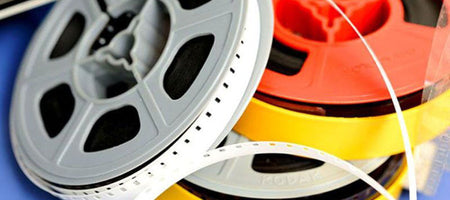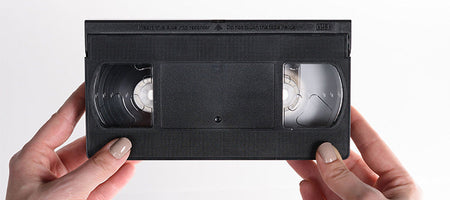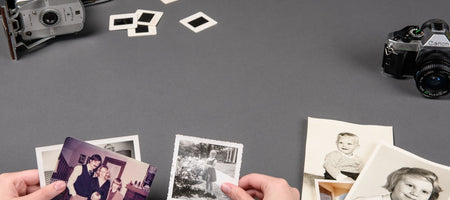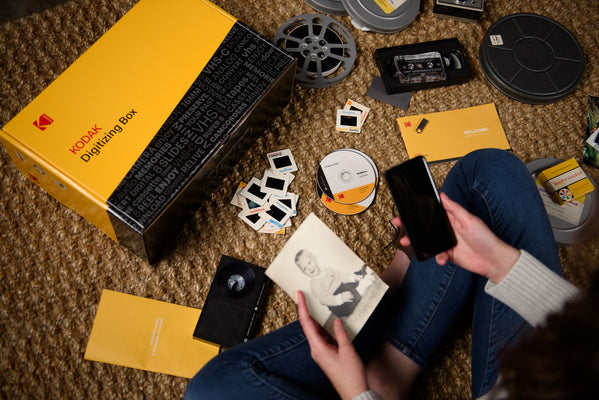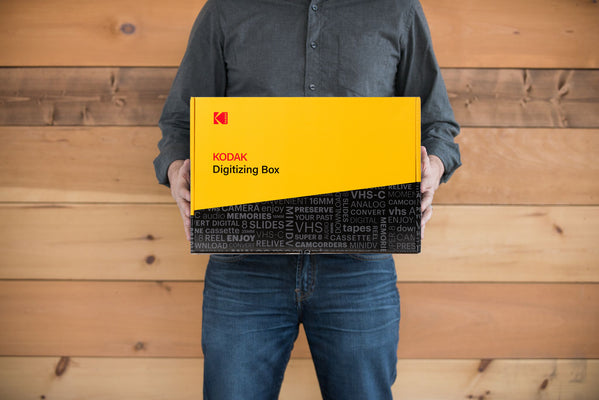The video tape has an illustrious history. From the Betamax to VHS to VHS-C, to Hi8 to MiniDV and more. And all throughout this videolution, the video tape just kept getting smaller and better with each and every iteration until it’s ultimate demise.
But with so many formats introduced to the market over the decades, it’s hard to know all the differences between them. What tapes were what and when were they released? Which had better features? Which were backwards compatible? You name it.
So let’s hit play and shed a little bit of light on these questions as we uncover the differences between two out of the many video tape formats: Hi8 and MiniDV.
Hi8
Just before the 90s hit, 8mm tape tried to make a comeback of sorts. Video8 analog video tapes had been released in the mid-80s, followed shortly after by the introduction of its improved successor, the Hi8, in 1989. These high-band Video8 (that’s what Hi8 stood for) tapes were still analog video and analog audio but with the option for digital audio. They improved upon the existing Video8 recorder electronics and media formulation which increased the overall recorded bandwidth and luminance. In short, they were about the same picture quality as LaserDisc … remember those? It was Sony’s answer to combat the Super-VHS format, and Hi8 would last until Sony’s inevitable upgrade, the Digital8, released in 1999. This new Digital8 format did everything its name suggested, recorded digital video and audio, plus it had reverse compatibility, being able to play older 8mm (Video8) and Hi8 tapes. The same, however, could not be said for Hi8, which could only play Hi8 tapes and Video8 tapes – sorry, no Digital8.
Hi8 tapes were frequently used by happy-to-capture-everything dads, amateur videographers and in some minor television productions, thanks to its lightweight and portability. Hi8 featured:
- Analog AFM audio & PCM audio recording (in some higher end models only)
- 400-line video luminance resolution capability
- Recording lengths of 30, 60 and 120 minutes
Although Hi8 took a backseat to Digital8, its camcorder wasn’t actually discontinued until 2007 – just shy of 20 years after its initial release. And the tapes themselves, they lasted a few years longer finally bidding adieu in 2012.
MiniDV
By the time the late 90s rolled around, the VHS (and VHS-C) had been king of the home video market for more than a decade. Video8 and Hi8 had helped make the filming industry more portable and the shoulders of amateur filmmakers were thankful, but an even newer more portable videotape challenger would appear just a few years before the millennium, the MiniDV, or Mini Digital Video tape. This new “mini” 6mm tape (vs the 8mm Hi8 tape) was tinier than ever, making it ridiculously portable. It was also an innovation, being the first digital camcorder format released in 1995, followed shortly by the Digital8 format – Hi8s successor and it’s biggest competitor.
MiniDV featured:
- PCM audio recording
- 500-line video resolution capability
- 640x480 still-picture resolution
- IEEE 1394Firewire, i-Link computer interface
- Up to 90 minutes record time in LP mode
Manufactures saw the promise in MiniDV when it was released in the mid-90s, which is why several major companies, including Canon, Sony (ironically enough), JVC, Panasonic and Sharp all hopped on the little tape’s bandwagon. And because Digital8 was only manufactured by Sony, the MiniDV eventually won that format war heading into the 2000s. It was a logjam of formats and companies vying for first place by the time the millennium rolled around.
But just because these former rivals have long ended their format war, it doesn’t mean they’re officially dead. If you’ve got any old Video8, Hi8, Digital8 or MiniDVs laying around the house – say in a closet or attic, then you’re in luck. Those memories can be digitized and we can help! So, forget about the format feud, it’s time to save your memories while there’s still time. Chances are they’re brimming with magnificent 90s and turn-of-the-century nostalgia, and that sounds like a great idea for a family watch party.

